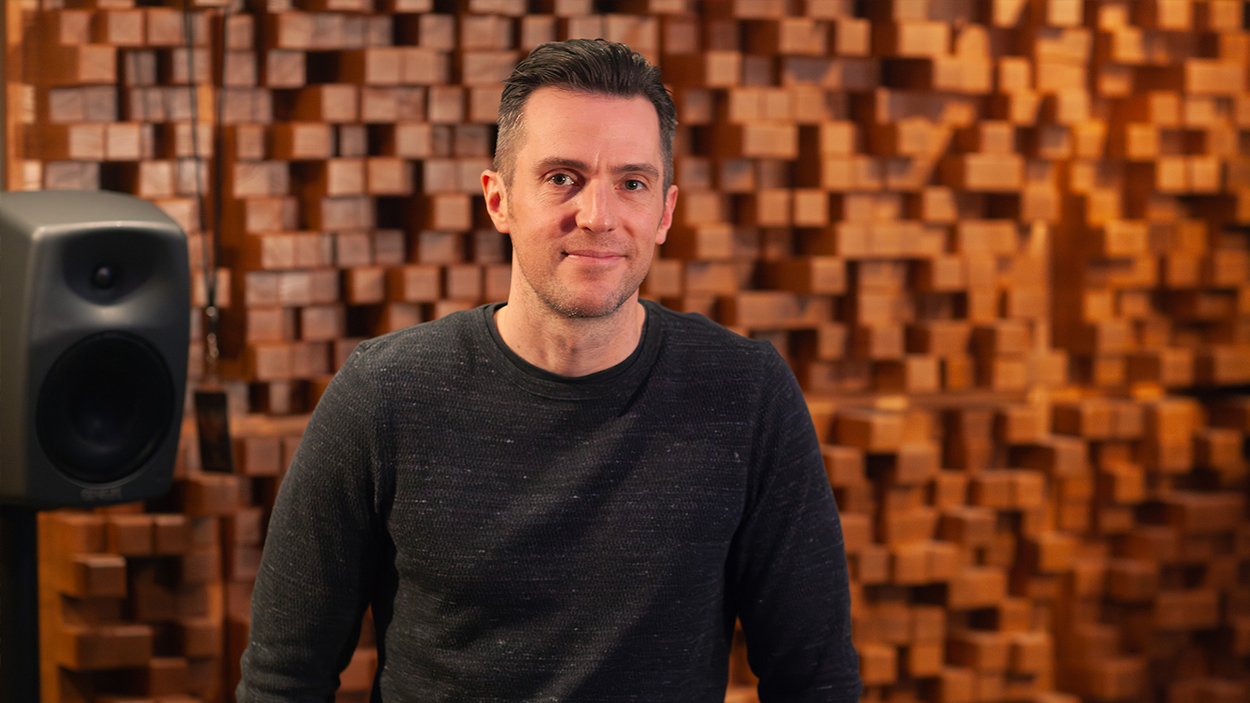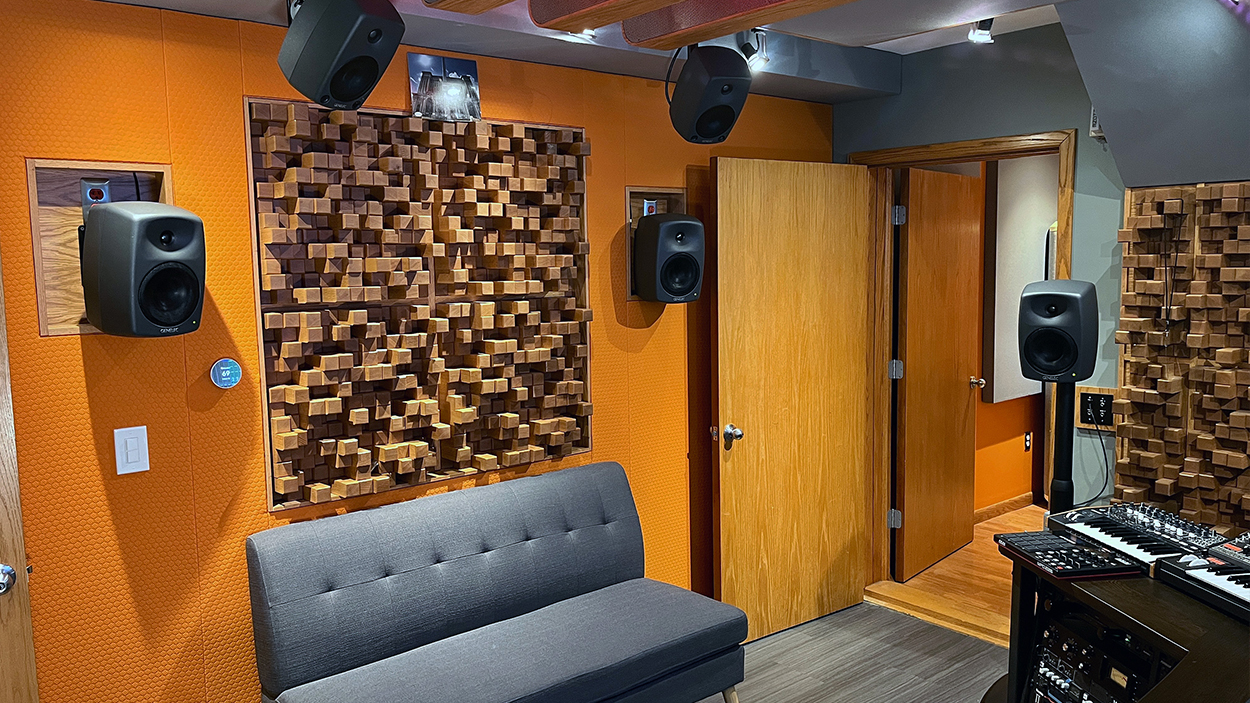Immersive Talk with Jeff Dittenber
What can you tell us about yourself?
I'm the Director of Sound Design at Yessian Music and Sound, which is an original music, sound design and mix company. I’ve been a musician for most of my life, finding my way through guitar, then bands, music school, professional music production and, finally, finding my passion in Sound Design for motion pictures. I’m a huge film fanatic, and sound design gives me the opportunity to blend my two creative loves: audio and film.

Can you tell us more about your studio space?
Yessian is a large company that has been in business for over 50 years. Originally based out of Detroit, MI, it has since expanded out to NYC, LA, and Europe. Our facility in Detroit has one large recording and mix studio, two medium sized recording and mix studios (both of which are Atmos equipped) and three edit suites/mix rooms. Most of our rooms were designed by acoustic designer Glenn Brown of GPB Studios and built by Ken Capton of Solar 2 Studios. My room (Studio B) is primarily my sound design laboratory. It’s a somewhat small space, but it has a powerful setup that allows me to do a lot. The control room dimensions are 11 ft x 14 ft, and the booth dimensions are 11 ft x 8 ft. If I need a bigger space, I can simply use another room.
What are your key pieces of studio equipment?
We are primarily an Avid Pro Tools facility, so all of our rooms have Pro tools Ultimate and a large assortment of hardware and software tools to work with, including Avid EUCON controllers. Studios B and C are both setup as 7.1.4 recording, editing and mixing rooms. Studio B uses a Genelec system (I’ll dig into more detail about that later), while studio C uses an ATC system. They both use the Avid MTRX Studio I/O, which also has an incorporated monitor controller section via the Digital Audio Denmark software. Dante also allows us to patch between rooms for further monitoring flexibility – very handy when checking mixes.
Both Studios B and C are focused on audio post, whereas Studio A is more focused on music production. It’s equipped with the SSL AWS 948 48-channel mixing console, as well as a large assortment of outboard preamps, compressors, EQs, Reverbs and other processors. Additionally, Studio A has two monitor chains, one of which is a 5.1 Genelec system (more details below).
Genelec Systems:
Studio A:
Studio B (my room):
- Format 7.1.4
- Models: LCR = 8351B, Surrounds (Side & Rear) = 8040B, Heights = 8030A, Subwoofer = 7370A

What type of work do you do in your studio?
We do a healthy mix of original music creation, music licensing, sound design and mixing. We primarily work in commercial advertising, experiential, themed entertainment, immersive installations, broadcast, film and gaming.
Is there a particular Immersive format you specialise in?
We have a long history of working with customized immersive layouts, particularly for our themed entertainment and experiential clients. So having a flexible multichannel setup in the studio is essential. We also do a fair amount of work using the Dolby Atmos format, but we've also worked on projects using Holoplot, L-ISA, IOSONO, and Ambisonic audio for VR/AR. We ultimately decided to setup our rooms using the Dolby Atmos model as a foundational base. We can customize monitor layouts to mimic other formats if needed.
How and when did you become interested in immersive audio?
Around 2010 we started creating a lot of original content for immersive flying theatres (very similar to Soarin’ at Disney). These theatres have generally been a custom-built audio design behind a perf screen, usually a 17.1 system. At the time, we would premix in 5.1 at the studio, and then finally do an on-site mix in the theatre itself. This really sparked our path into immersive formats, and it has continued to expand from there.
What made you finally equip your studio for immersive?
Scott Gatteño, our Lead Mixer and Director of Technology, has long been our surround and immersive format champion. As our work demands began to evolve, he always kept up with how we needed to evolve our studios. In 2006, we already had two 5.1 surround rooms, which eventually expanded into 7.1. Then in 2017, one of our themed entertainment projects required a Dolby Atmos mix for the installation, which he tackled by renting time at a dub stage. That sparked our interest in expanding our facility into a larger immersive space. Then in 2020, we finally decided to make the upgrade to two of the rooms from 7.1 to 7.1.4, allowing us to the opportunity to dive deep into the world of Atmos and immersive in our own space. We can customize the speaker layout to work with whatever format we are currently working around. Aside from that, we had already been working with Ambisonic audio for VR and AR.

As an engineer, how do you express yourself with immersive audio?
Immersive audio allows me to create an entire world around the listener, which is such a rich space to be in. It’s challenging, because the organization and routing is so much more complex than stereo, or even 5.1, but once you wrap your head around how to thread the needle between beds and objects, it gets much easier. Our immersive sessions generally follow film techniques. Beds and Objects organized into food groups using folders and VCAs as the foundation. We can then customize from there based on the need of the project using a combination of native routing as well as third-party immersive plugins. We rely on unified templates between each of our studios to help keep things easily movable between rooms and engineers.
Can you tell us more about your Genelec monitoring systems?
I’ve been using Genelec loudspeakers for roughly 15 years now, and my setup has seen a constant evolution. My first experience was music mixing on a pair of 1030As. As I moved deeper into audio post, I switched to a 5.1 system using 8030A for the five channels, plus a 7060B sub. I later upgraded the LCR to 8040Bs and kept the surrounds and sub the same, later evolving that system into a 7.1.4 Atmos setup. I was satisfied with that for quite a while, but once I heard the 8351As at an AES event in LA, my mind was blown. It was quickly apparent that the concentric driver system was a whole new sound that allowed me to hear more critically than ever before. Walking away with that impression, I decided to further upgrade my 7.1.4 system to have 8351Bs for the front LCR, and then a 7370A sub. I kept four 8040Bs for the side and rear surrounds, and I'm using four 8030As for the height channels. The LCR and sub are equipped with Genelec Smart Active Monitoring technology, so I calibrate using the GLM system, which is another game changer all together.
Can you tell us more about how you use GLM to calibrate your monitoring?
I’m a huge fan of GLM for monitoring system calibration. I did extensive testing for about two weeks straight – experimenting with placement and mix position. In every position, I found the GLM calibration was a notable improvement over un-calibrated. My room is relatively small, so it can be a challenge to get the low end to feel right and the imaging to be solid. These loudspeakers paired with GLM, improve both issues for me. Plus, I was able to create multiple calibration presets based on the listening positions I like in the room.
Can you reveal a few of the immersive projects you've worked on recently?
- Illuminarium: Winterland Show (Located in Atlanta, GA).
- Aerosmith Las Vegas Residency for Dolby Atmos Live.
- View Boston Observation Deck.
- Princess Cruise Lines Immersive Dinner Theatre.
- Sky Fly: Soar America Flying Theatre (Located in Pigeon Forge, TN).
- Sony Atmos Soundbar Trailer (showcasing their flagship 7.1.2 soundbar).
- Sony Gaming Surround Headphone Trailer (showcasing their flagship binaural headphone setup for gaming).
- Trans Studio Bali: Flying Over Indonesia.
Having the ability to create and deliver in immersive formats has definitely increased our ability to take on new challenges as a studio. We’ve continued to expand our business in this growing space – a good commercial decision, for sure.
How do you see the future of immersive audio over the next few years?
Fortunately, immersive audio has found its way into the consumer market, from gaming, to home theatre to Apple Music. The technology is scalable based on budget, from a giant 7.1.4 home theatre system, down to a pair of Air Pods playing back a binaural render of an Atmos mix. As long as it’s easy to access by the consumer, it will continue to grow. Additionally, the world of experiential continues to push the envelope of guest immersion, and audio is a huge part of that.
To find out more about Jeff Dittenber, click here.
Do you want to be featured in our ‘Immersive Talk’ series? If so, just post some pictures of your setup on Instagram using the #GenelecImmersive hashtag. We’ll be keeping a look out for the most interesting setups, so who knows? We may be in touch with you!







